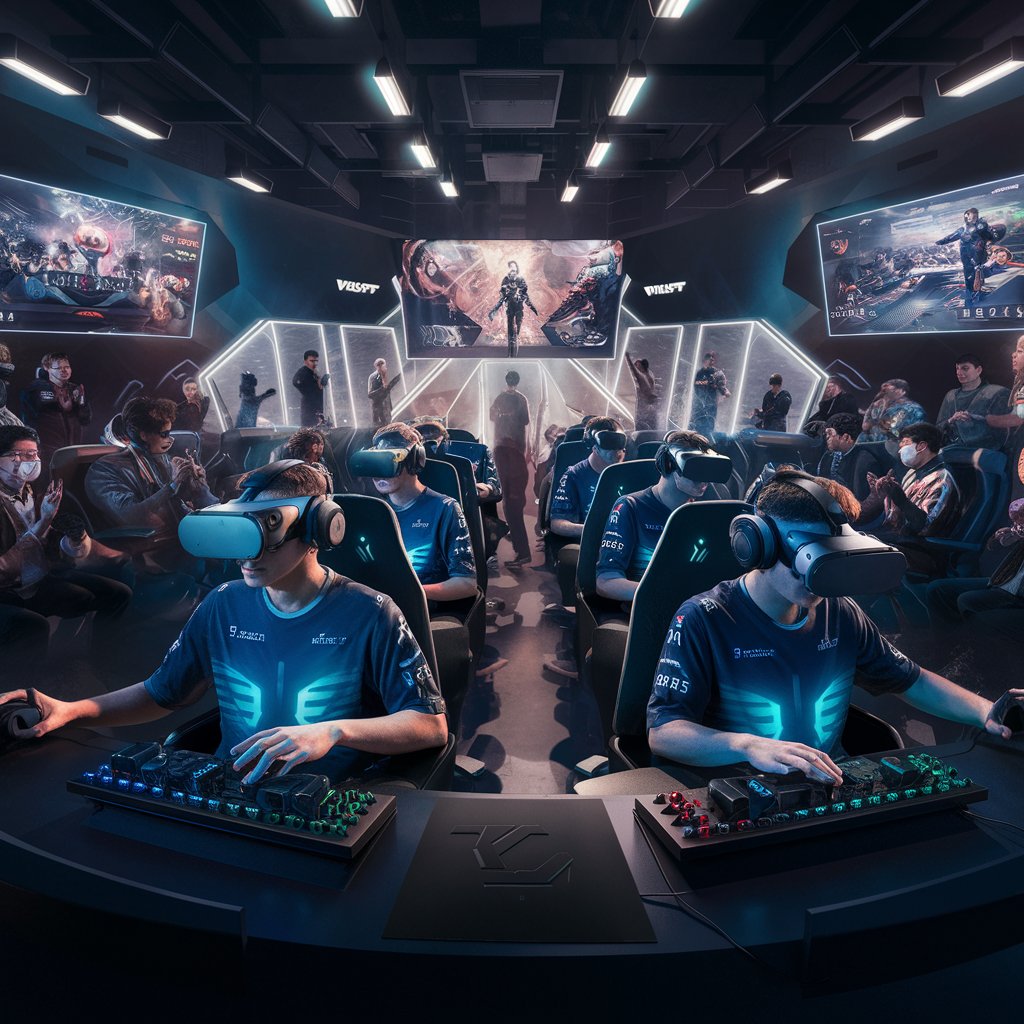Virtual reality (VR) is reshaping competitive gaming, ushering in a new era of immersive experiences that extend far beyond traditional screens. As VR technology becomes more sophisticated, it is revolutionizing the way competitive gamers train, compete, and interact with their environment. This shift is not just about enhancing visual fidelity; it’s about fundamentally changing how games are played and experienced.
The integration of VR into competitive gaming offers a heightened sense of immersion that traditional setups cannot replicate. Gamers are no longer confined to a flat screen; instead, they are placed in fully three-dimensional environments where every movement and action feels more intuitive. This spatial awareness can significantly impact game strategies and player performance. For instance, in first-person shooters or battle royale games, VR allows players to physically move and look around their virtual space, providing a more accurate representation of their surroundings and enhancing their ability to react to threats and opportunities.
Moreover, VR’s impact on competitive gaming extends to the training and preparation of players. Virtual environments enable gamers to practice and refine their skills in ways that were previously impossible. With VR simulations, players can engage in realistic training scenarios, test different strategies, and gain a deeper understanding of game mechanics. This type of training not only helps in honing individual skills but also in improving team coordination and communication. The ability to simulate various in-game situations provides a significant advantage, allowing players to prepare for a wide range of scenarios and challenges.
As VR becomes more integrated into competitive gaming, it also introduces new opportunities for engagement and fan interaction. Spectators can experience games from unique perspectives, such as viewing matches from the players’ viewpoints or exploring virtual arenas. This level of engagement enhances the overall spectator experience, making it more immersive and interactive. Fans can also participate in virtual events and interact with their favorite players in ways that were previously unimaginable, bridging the gap between gamers and their audience.
The rise of VR in competitive gaming also brings new challenges and considerations. The technology’s high cost and the need for specialized equipment can create barriers to entry for both players and teams. Additionally, the physical demands of VR gaming, such as the need for adequate space and potential motion sickness, require careful consideration. As VR continues to evolve, addressing these challenges will be crucial for its widespread adoption in the competitive gaming scene.
In summary, the impact of virtual reality on competitive gaming is profound and far-reaching. By offering enhanced immersion, innovative training methods, and new ways for fans to engage, VR is setting the stage for a transformative shift in how games are played and experienced. As technology advances and VR becomes more accessible, its role in competitive gaming is likely to expand, bringing about even more exciting developments and opportunities for players and fans alike.

